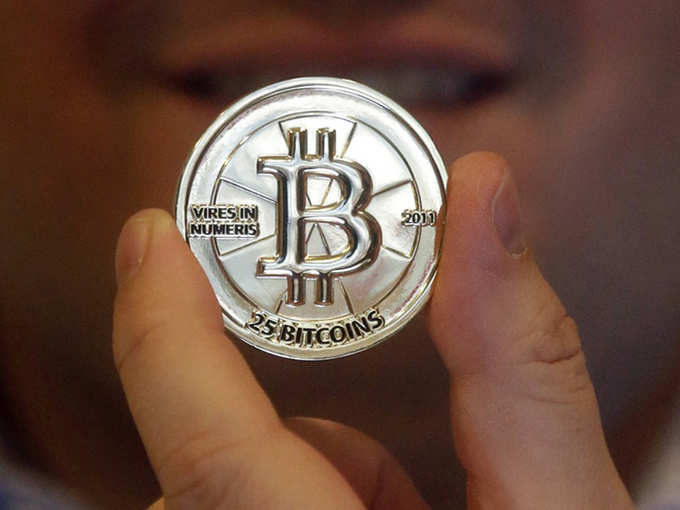
The greatest trick the Devil ever pulled was convincing man he didn’t exist. Well, last week,
MIT (Massachusetts Institute of Technology) distributed 100 Bitcoins to every undergraduate student – proof enough that cryptocurrencies are entering the mainstream faster than we realise. Satoshi Nakamoto wrote the code that started it all and gave birth to Bitcoins, a digital currency that works without any bank. But who is Nakamoto? We still don’t know whether he is a pseudonym, a single person, a group of people, a secret group of the worlds’ elite or a group of organisations working together. Everything is not what it seems. We are so excited about this new currency that ironically, we don’t have a single concrete fact apart from the software program. In the current craze for Bitcoins, we have even forgotten the fundamentals of a currency, why something is or can be used as currency and ultimately, what gives it its value.
Where does this
Bitcoin come from? The answer is – it gets ‘mined’ into existence. Any person with the requisite hardware and an Internet connection can participate in the mining. Simply put, the mining process will involve solving very complex computational puzzles. Once solved, this transaction is verified and added to something called a block chain, which is a public ledger. A newly released Bitcoin and the transaction fee (also paid in Bitcoins) can then be claimed by the first person to solve the puzzle and place it on the block chain.
But who decides how much reward is released every time? Nakamoto’s software, of course. Bitcoins are released with each mined block (Block rewards) and the amount of Bitcoins released is inversely proportional to the increase in mining, i.e., the block reward is halved every 210,000 blocks. It currently stands at 25 Bitcoins and it had started at 50 Bitcoins in 2009.
According to the current Bitcoin protocol, the cap is placed at 21 million and no more can be mined. The software programmers have decided an arbitrary number for the amount of Bitcoins that will finally be in circulation. Simple economics suggests that the block rewards reduce over time and will eventually reach zero.
Is it difficult to mine these things? Nakamoto has stipulated that the difficulty will increase proportionally with the amount of Bitcoins being mined. So the more people are mining, the more difficult it gets, and vice versa. Unlike the early days when a simple hardware and Internet connection was enough to mine, it now requires dedicated, custom-built hardware, without which mining is pretty much impossible.
The hardware that runs it is called
ASIC (Application-specific Integrated Circuit). And it is so taxing that most of the times the amount of electricity consumed is greater than the revenue in Bitcoins. Putting it succinctly, the more Bitcoins are mined, the fewer are available in each subsequent mining, and the more people mine, the more complex the puzzles get, which means each subsequent mining requires more and more energy. That is why theoretically, the 21st million Bitcoin will need infinite computing power and energy to mine, and its price will be astronomical.
As far as security goes, the mining of Bitcoin is decentralised. All decisions are made by consensus and a simple majority. It means the moment a person has greater than half the Bitcoin network’s mining power, he has the power to control it.
So the more exquisite the tulip bulbs, the greater the price paid for those. We are talking about the Tulip mania in 1637. The ultimate use of the bulb was to grow beautiful flowers. But the greater fool
theory proved otherwise. Till such a time when the cost of one tulip bulb was worth more than a professional’s annual salary. Who wanted the flowers from these bulbs? And the arbitrary complex puzzles being solved to mine Bitcoins are useful to what end? The price of these tulips had skyrocketed because of speculation in tulip futures. And this was done by people who really couldn’t tell a tulip bulb from a daffodil. Bitcoins are exciting the same nerve centre in the brain and we still don’t know who Nakamoto is and why we solve these complex puzzles.
In this Bitcoin race, the
miners have gone crazy. They are now getting the latest technologies and setting up their infrastructure in locations with cheap electricity, to mine that last Bitcoin hidden by Nakamoto somewhere deep in the program. The coins are not real; the puzzles are arbitrary, and solving them for their complexity gives solutions and results that are equally arbitrary and of use to no one, except in Nakamoto’s game. You are a miner in a software game where each level gets progressively harder and the game finishes at level 21 million.
Have we finally figured out whether Nakamoto is, in fact, Kaiser Soze? Or what happened to the last few people left standing with the tulip bulbs? I still can’t decide if MIT has taken the blue pill or the red.
 The greatest trick the Devil ever pulled was convincing man he didn’t exist. Well, last week,
The greatest trick the Devil ever pulled was convincing man he didn’t exist. Well, last week, 